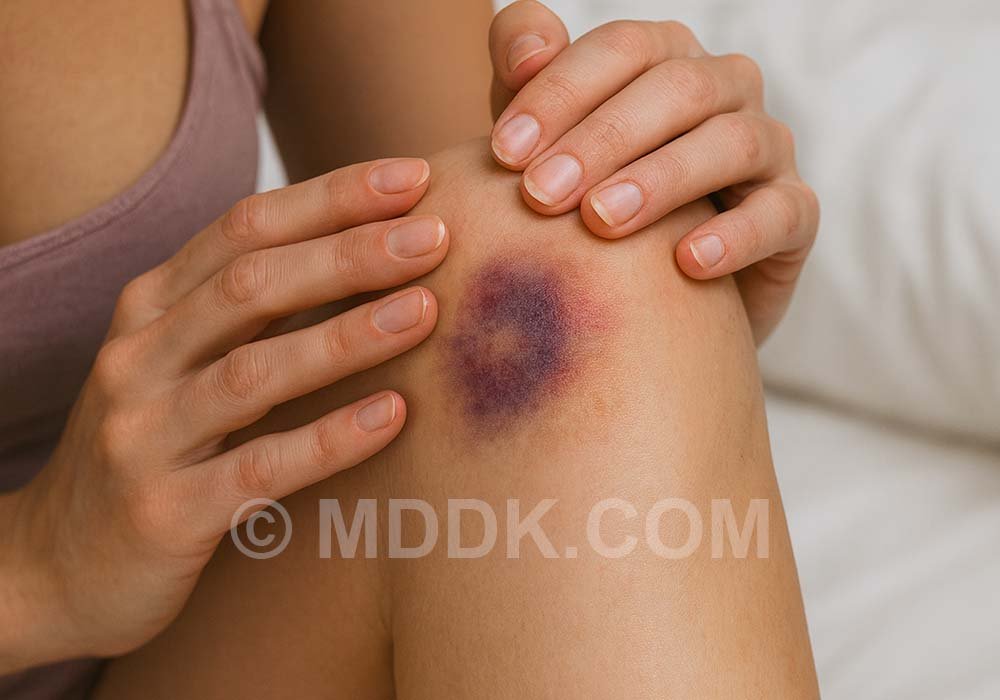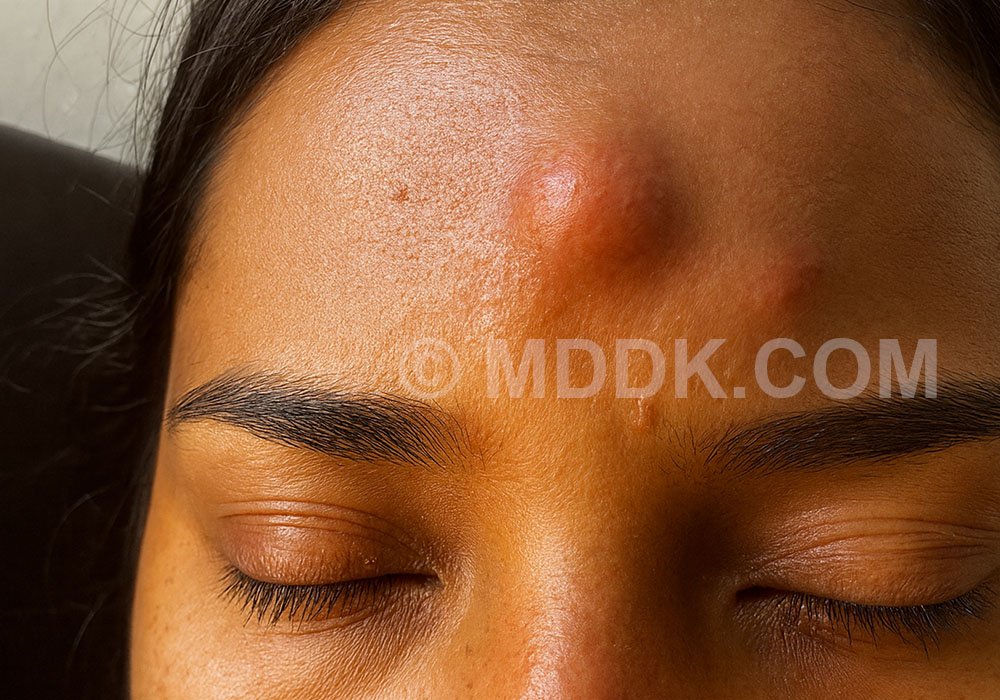Inner Thigh Itching
Itching on the inner thigh is a common issue that can affect people of all ages. It can range from mild discomfort to severe irritation, sometimes interfering with daily activities or sleep. Because the inner thigh area is prone to moisture, friction, and heat, it becomes a common site for skin irritation, infections, and allergic reactions.
While occasional itching may be harmless, persistent or recurring itchiness can be a sign of an underlying condition that needs attention. Identifying the root cause is key to finding the right treatment and relief.
Causes of Inner Thigh Itching
1. Skin Irritation
Friction from walking, sweating, or wearing tight clothing can irritate the skin of the inner thighs. This is especially common in hot or humid weather and among people who engage in physical activity or have larger body frames.
2. Fungal Infections
Jock itch (tinea cruris) is a common fungal infection that affects the groin and inner thighs. It causes red, itchy, ring-shaped rashes and thrives in warm, moist environments.
3. Bacterial Infections
Conditions like folliculitis (infected hair follicles) or impetigo can cause itching along with red bumps, pus, or crusting. These often develop after shaving or sweating.
4. Allergic Reactions
Soaps, detergents, fabric softeners, synthetic underwear, or shaving products can trigger contact dermatitis – an itchy, inflamed skin reaction in the inner thigh area.
5. Eczema and Psoriasis
Chronic skin conditions like eczema and psoriasis can cause dry, scaly, itchy patches on the thighs and groin area. These may worsen with heat, sweating, or skin trauma.
6. Yeast Infections
Candida overgrowth can occur in skin folds, including the inner thighs, especially in warm, sweaty environments. Itching is often accompanied by redness and a moist, shiny rash.
7. Insect Bites or Shaving Irritation
Bug bites, ingrown hairs, or irritation from shaving can all lead to itchy red bumps in this sensitive area.
Symptoms
- Redness or discoloration in the affected area
- Dry or flaky skin, sometimes with cracking or peeling
- Burning or stinging sensation when walking or sweating
- Rash, bumps, or blisters especially with infections
- Foul odor or discharge in case of fungal or bacterial overgrowth
- Itching that worsens at night or with heat and moisture
Risk Factors
Some people are more likely to experience inner thigh itching due to their body type, habits, or environment. Recognizing these risk factors can help with prevention and early management.
Body Composition
Individuals with skin folds or larger thighs may experience more friction and moisture buildup, especially during walking or exercise, increasing the likelihood of irritation and fungal infections.
Excessive Sweating
People who sweat heavily, especially in hot or humid climates, are at higher risk for fungal and bacterial infections in the groin and thigh region.
Hygiene Practices
Infrequent bathing, poor drying after showers, or wearing unwashed undergarments can contribute to microbial overgrowth and skin irritation.
Shaving and Hair Removal
Frequent shaving or waxing of the inner thigh area may lead to ingrown hairs, razor bumps, or contact dermatitis — all of which can cause itching.
Tight or Non-Breathable Clothing
Wearing tight jeans, synthetic underwear, or fabrics that trap moisture can cause friction, heat, and sweat accumulation, irritating the skin and promoting infections.
Diagnosis
Diagnosing the cause of inner thigh itching typically begins with a physical examination. A doctor will inspect the skin for visible signs such as redness, rash patterns, swelling, or lesions.
Medical History
Information about recent activities, hygiene habits, clothing materials, shaving practices, and exposure to new skincare or laundry products can help identify triggers or allergens.
Skin Swabs or Scrapings
If a fungal or bacterial infection is suspected, a skin sample may be taken for microscopic analysis or culture to confirm the diagnosis and guide treatment.
Allergy Testing
Patch testing may be recommended if an allergic reaction to products, fabrics, or detergents is suspected.
STD Testing
In cases where itching is accompanied by genital symptoms, your doctor may consider testing for sexually transmitted infections, although most inner thigh itch is unrelated to STDs.
Treatment Options
Treatment depends on the specific cause of the itching. For most cases, a combination of skin care, topical treatments, and lifestyle changes can provide relief.
Home Care
- Wash the area gently with mild soap and water, and dry thoroughly.
- Wear loose-fitting, breathable cotton underwear and pants.
- Use an anti-chafing powder or barrier cream in areas prone to rubbing.
Topical Treatments
- Antifungal creams such as clotrimazole or terbinafine for jock itch or yeast infections.
- Antibiotic ointments for bacterial infections like folliculitis.
- Corticosteroid creams for eczema, allergic rashes, or contact dermatitis.
Oral Medications
In severe or resistant cases, oral antifungal or antibiotic medications may be prescribed. Antihistamines may also be used to relieve intense itching and prevent scratching.
Hygiene and Lifestyle Changes
Maintaining good hygiene, changing out of sweaty clothes quickly, avoiding harsh soaps, and switching to fragrance-free laundry products can reduce recurrence.
Prevention
Preventing inner thigh itching involves keeping the area clean, dry, and free from friction or irritants. These simple daily habits can help reduce the risk of both irritation and infection.
Wear Breathable Clothing
Choose loose-fitting underwear and pants made from natural, breathable fabrics like cotton. Avoid synthetic materials that trap heat and moisture.
Stay Dry
After bathing, dry the inner thigh area thoroughly, especially in skin folds. Use an antifungal powder or cornstarch-based powder to reduce moisture in hot weather or during exercise.
Maintain Good Hygiene
Shower daily, especially after sweating. Use a gentle cleanser and avoid harsh soaps that can strip the skin’s protective barrier.
Avoid Known Irritants
Switch to fragrance-free laundry detergents and skin care products if you have sensitive skin. Be cautious with shaving and avoid using dull razors or irritating creams.
Change Out of Wet Clothes
After workouts, swimming, or excessive sweating, change into dry clothes promptly to prevent fungal and bacterial growth.
Frequently Asked Questions
1. What is the most common cause of inner thigh itching?
The most common cause is friction combined with sweat, which can irritate the skin and lead to conditions like jock itch or contact dermatitis.
2. How do I know if it’s a fungal infection?
Fungal infections like jock itch often appear as red, itchy, ring-shaped rashes with scaling around the edges. The area may feel warm and become more irritated with sweating.
3. Can shaving cause itching on the inner thighs?
Yes. Shaving can cause ingrown hairs, razor burn, and micro-irritation, especially if done with a dull blade or without proper lubrication.
4. Is inner thigh itching a sign of an STD?
Not usually. While some STDs can cause groin itching, most inner thigh itching is due to non-sexually transmitted issues like fungal infections, irritation, or allergies.
5. What creams work best for inner thigh itching?
Antifungal creams (for fungal infections), corticosteroid creams (for inflammation), and antibiotic ointments (for bacterial infections) may all be used depending on the cause. It’s best to consult a doctor before applying medicated creams.
6. Can tight clothing make the itching worse?
Yes. Tight clothing traps heat and sweat, increases friction, and can worsen itching or even cause new irritation or infection.
7. How long does it take for inner thigh itching to go away?
With proper treatment and skin care, mild cases often improve within a few days. Fungal or bacterial infections may take 1 to 2 weeks to fully clear with medication.
8. Is it okay to scratch the itch?
Scratching can damage the skin and worsen irritation or lead to infection. It’s better to soothe the area with medication or cool compresses and avoid further trauma to the skin.
9. Should I stop exercising if I have inner thigh itching?
If exercise worsens the itching or causes pain or rash to spread, it’s best to pause until the skin heals. Wearing moisture-wicking clothes and applying barrier cream can help prevent irritation when you return to activity.
10. Can I use baby powder to prevent inner thigh itching?
Yes, unscented baby powder or cornstarch-based powders can help reduce friction and moisture. Avoid using talc-based powders if concerned about long-term safety.

